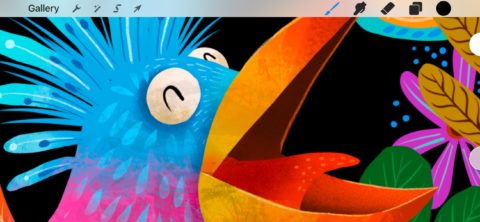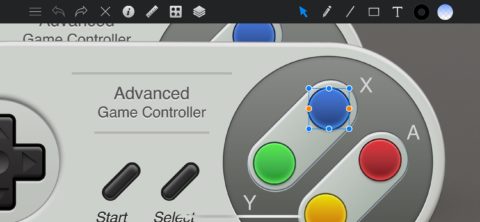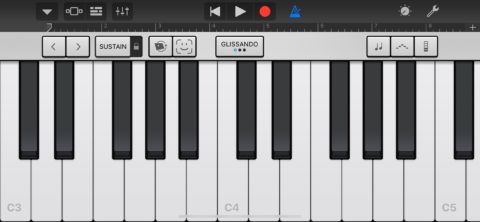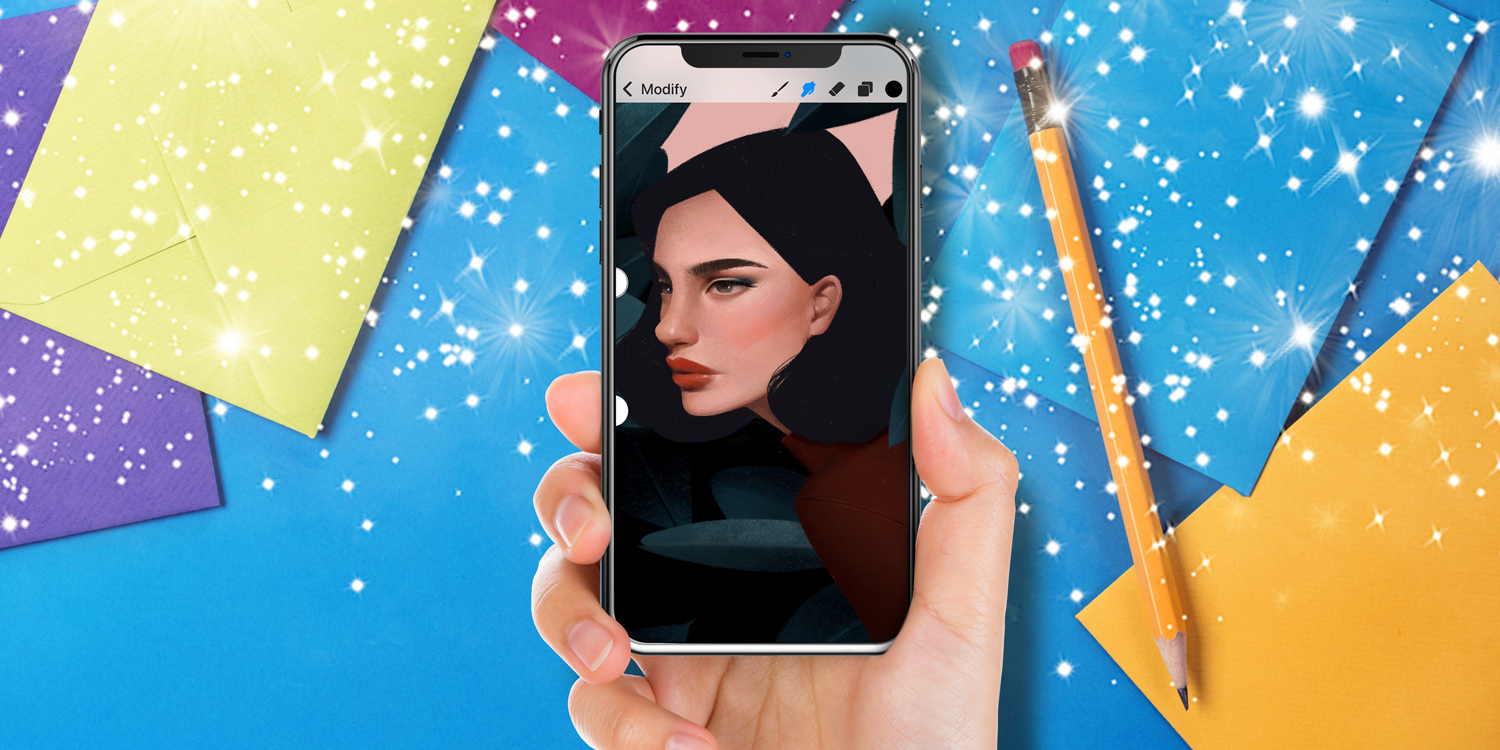Whether you fancy painting, composing, writing, or photography, your phone can take you to new heights
When you look at your iPhone, what do you see? Beyond the glass and metal, obviously. Chances are the device’s very name will prompt your brain to say ‘a phone’. But really, the phone bit is merely one of dozens of apps you may have installed – each of which has the power to transform the iPhone’s blank canvas into whatever you want it to be.
For most people, this means what’s ostensibly a phone can become a web browser, a camera, a tiny television, and a means to browse endless social media feeds. But also, Apple mobile devices have since their earliest days provided the means to unlock untapped creativity in their users.
This may come as a surprise if you’ve heard from certain parties that iPhones and iPads primarily remain consumption devices. Although this is technically true in terms of how often devices are used for various tasks, this line of thinking often aims to dismiss Apple’s iOS kit in the creative arts, cementing only traditional PCs as ‘proper’ computers in that field.
Given what’s now possible on a modern iPhone, this is flat-out wrong; in fact, it’s been wrong now for at least a decade.
Always on hand
Much of the magic of the iPhone is that you always have it to hand. A phrase we often hear is that the best camera is the one you have on you at the time – a true enough statement even in the days before the iPhone had the stunning lenses and software it enjoys today. After all, better you manage to capture something – even if not in the highest possible resolution that you might have got with a pro-level camera – rather than nothing.
This concept can be expanded to other creative fields. For example, if you’re a songwriter on the bus, and a melody suddenly forms in your mind, having the means to get down a sketch for a song there and then is hugely valuable. To start composing in a piece of software, immediately building on your initial idea and taking advantage of momentum, beats scribbling notes down on a paper notepad any day.

Elsewhere, artists sometimes carry with them a pad and a small selection of paints and pastels. But the iPhone can be a suitable substitute – with the right software installed – wherever the user happens to be. And even when it comes to writing, the iPhone can boost creative output. Sure, someone’s hardly likely to bash out an entire novel or screenplay while madly tapping with two thumbs; but quick ideas or lines can be jotted down in any text editor, and then fleshed out on returning to the office.
You can always undo
That notion of having the right tools to hand, and getting ideas down when ideas strike, makes perfect sense. And the iPhone can be central to that. But what if you’re not already immersed in a creative field – yet would like to be? The iPhone can help there, too, through its immediacy, accessibility, and user-friendliness.

If you have a willingness to explore and experiment, and to see your iPhone as more than a window to Facebook and Netflix, you can unlock your creative potential in a way that would be much harder and slower going if starting out with real-world tools. In part, this is because of the confidence you can build when working with apps on an iPhone.
If you’re painting and make the wrong mark, you just undo and continue. If you play a duff note in a music-making app, it doesn’t matter, because it can always be edited later. And all of these things can be done whenever you have a spare moment, rather than limiting yourself to an easel, a PC, or a studio full of guitars and keyboards.
Real-world benefits
That’s not to say your creative endeavors should always remain limited to your iPhone. Skills you pick up on your iPhone are often transferable. If you get pretty good drawing with a finger or stylus in the likes of Procreate Pocket or Linea Go, chances are you’ll be able to with pen and paper. If you can rattle off a song in the likes of GarageBand, it’s a relatively small step to working with pro-level software on the desktop.

There’s also an interesting kind of transference that happens regarding confidence and self-belief. Schools that have used iPhones and iPads in art classes note that children quickly gain in confidence, largely because of the aforementioned undo. When it’s not possible to make a permanent ‘mistake’, creativity flows. But this then often continues when working with real-world tools, be they paints, inks, instruments, or cameras.
It’s time to get creative
Of course, for Apple, this approach is far older than the iPhone. The original Mac had an app for creating graphics, MacPaint. And although nodding heavily towards creative professionals, the point was that anyone could use it. You didn’t need to be an artist to do so – but with enough time and effort, the software could help make you one.
With iPhone, the potential is arguably much greater. Apps are more plentiful and significantly cheaper. Many of them are free. GarageBand is a recording studio in your pocket. Autodesk SketchBook is a painting and drawing app with a huge range of tools.
So in this modern world of Apple technology, there really is no excuse. If you’ve always wondered what it might be like to paint, or write a song, or creatively edit a photo, or fashion abstract videos, or just write, it’s easier than ever to get started. What’s more, once you delve into the full range of possibilities your iPhone affords, beyond the ‘usual’ apps, you’ll not want to stop.
Get the apps
If you’re feeling inspired to get creative, head to the App Store for more details on each of the key apps we mentioned earlier.

